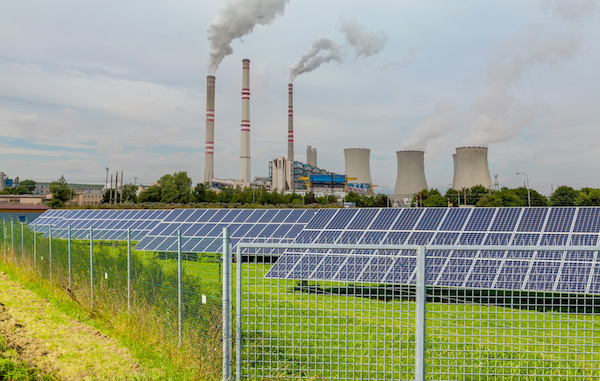How financial tools can help utilities move past coal
The owners of coal-fired power plants—namely, the utilities that run them—are recognizing these plants are a bad investment. The economic reality is that energy produced from wind and solar is significantly cheaper to produce than energy produced from coal, and the costs to keep coal plants running is outpacing the profits they generate. Despite the insistence by President Donald Trump that coal will make a comeback on his watch, the economic forecasts suggest that electricity generated by coal is quickly becoming a relic of the past.
With this reality, utilities are looking for a way to retire these coal plants and shift their financial resources towards these cheaper renewable sources of energy. As part of this shift, utilities are faced with a significant issue. Utilities invested in coal-fired power plants with an expectation the plant would continue to profitably operate for years into the future, allowing them to recover their investment over the plants remaining lifetime. A change in economics has caused utilities to recognize the power plants remaining life is much shorter than originally expected, raising questions about how much, if any, and over what time the remaining investment should be recovered from customers.
This presents a problem for utilities making a rapid transition to cleaner energy sources and for cost savings for customers. Climate change is a crisis unlike any we have ever seen, and the science community has been clear that we need to significantly reduce carbon emissions across the board in the next 11 years in order to avoid the worst impacts from climate change.
At Clean Wisconsin, we recognize this is a major challenge that requires big and creative ideas. While we know that utilities need to make a major and rapid shift from fossil fuels to clean energy, the mechanics of this transition pose some critical challenges that need to be addressed. The financial realities of the transition in electricity generation is one of those challenges.
Reducing carbon emissions, enabling utilities to move towards clean energy investments, and helping reduce customer costs requires a way for utilities to get out from under these bad investments and free up the money they need to make the transition.
That’s where securitization comes in.
What is securitization?
In essence, securitization is a fancy word for a financing option to help utilities get out of high-cost investments—like coal plants—so they can free up the resources to move towards lower-cost, high return investments—like solar arrays. It’s sort of like refinancing your mortgage on your house. Maybe you have an old, inefficient furnace in your home, but you don’t have the money in the bank account to make that purchase. So you refinance your mortgage to a lower interest rate, allowing you to save more money every month so you can upgrade your old furnace to a new, energy efficient one sooner, helping you to reduce your monthly energy bill and save money.
That’s basically what securitization allows utilities to do. The utility to issues a bond, at a low interest rate, which is secured by the old coal plant. The utility recoups their investment in the old coal plant and uses the proceeds from the bond to build a new solar array, helping them to reduce their carbon emissions and lower costs for customers.
This financial tool also benefits the utility’s customers. Customers ultimately pay less than they would if the utility kept sinking money into the outdated and uneconomical coal or natural gas plant.
The Bottom Line
Ultimately, our work is centered around encouraging utilities to make smart, long-term investments in renewable energy like wind and solar. We cannot afford for utilities to be pouring capital into major investments like coal and natural gas, which are proving to be no match to the low cost solutions from clean energy.
But for the coal and gas plants that exist, securitization provides a way for utilities to walk away from those uneconomic investments and help reduce carbon emissions and save customers money in the meantime. There is an urgent need to significantly cut carbon emissions in order to avoid the most catastrophic impacts from climate change, and we must use every tool we have to tackle this major challenge.
Until we no longer have coal and gas plants in production, we need viable tools for utilities to make the rapid shift to clean, renewable sources of electricity. Securitization can help to expedite this shift by creatively using financial incentives to get utilities out of bad investments and into better ones—which is good for the environment and for customers.

